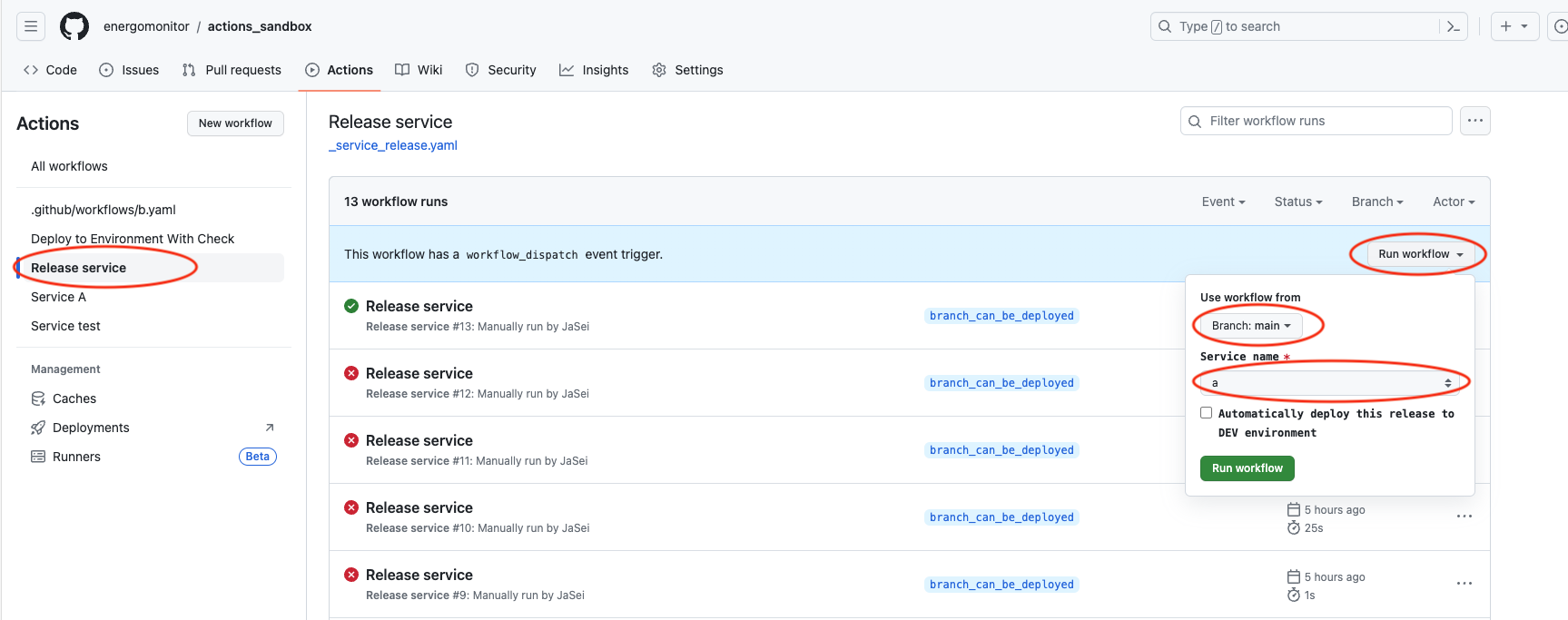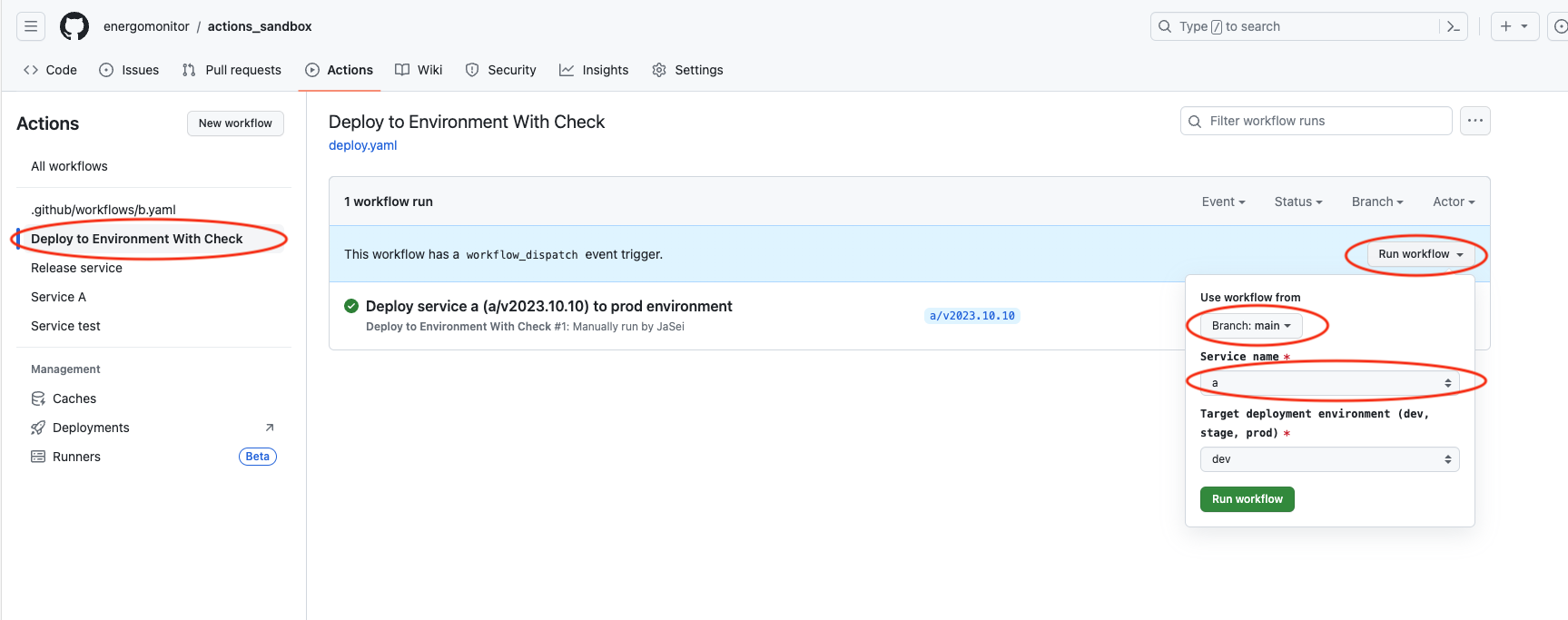This repository serves as a sandbox for testing continuous integration and continuous deployment (CI/CD) workflows using GitHub Actions. The primary goal is to automate the deployment process and ensure a smooth delivery pipeline for your projects.
- Release: Build and tag docker image and push it to the registry
- Deployment: The docker image is automatically deployed to the target environment.
- Support for more environments (dev and prod at least)
- Every commit in PR is checked by tests
- Manual deployment to environments
- Be able to deploy from branch
- Versioning
- Support monorepos (or more services in one repo)
- Support revert to previous image
- Use the same git tags and docker tags
- Use GitHub releases to track what is being released
- Use GitHub Deployments to track what and where is deployed
- Fully/Semi-automated deployment
Tagging services is closely related to versioning.
I've chosen CalVer for this example.
Here are some common versioning standards:
- SemVer
- Great for libraries, not so good for services - more e.g. this article
- zer0ver
- Weird simplification of SemVer
- CalVer
- Looks promising for services (or anything where you don't need to track API changes)
Follow these steps to effectively use the CI/CD workflow in the Energomonitor GitHub Actions CI/CD Sandbox:
When you have changes or new features to add, create a pull request. Automated tests are run to ensure the code meets the required standards.
When the tests pass and the code review is complete, you can merge the pull request into the main branch.
If you need to test the code on a specific environment (e.g., dev), manually trigger the Release service (_service_release.yaml) workflow
by clicking the Run workflow button in GitHub Actions. This workflow prepares a pre-release image and tag that can be deployed to the desired environment for testing.
- Choose branch where the code is
- Choose the service which you want to build
- Check if you want to automaticaly deploy this build to the
devenvironment
Testing is simulated by the test.sh script.
- Docker image is built
- Tag docker image in format
{service}:{tag} - (docker image is pushed to registry - not implemented yet)
- Code is git tag in format
{service}/{tag} - New github release is created
If you've configured your service accordingly, the merged changes can be automatically deployed to the development environment.
see example of automatic_deploy_to_dev option in a.yaml
To deployt to production, manually initiate the deployment process using the Deploy to Environment With Check (deploy.yaml) workflow.
- Choose the tag (branch) from you want to deploy
- Choose the service name
- Choose the environment
The deployment is mocked by deploy.sh script.
If you need to revert to previous version you just use manual deployment and choose the correct tag.
We use Slack integration and with this ☝️ CI/CD everything will be nicely seen in Slack.
- copy Makefile from some other service
- add
service_nameto deploy.yaml and _service_release.yaml - copy service workflow in .github/workflows
- environments (dev/stage/prod) are shared by all services
- one solution could be combine
service_nameandenvironment
- one solution could be combine
service_namelist (choice) are now defined on two places in the deploy.yaml and _service_release.yaml- choice don't support dynamic creation
- maybe somehow use environments with
service_namefor it?
- calver is now implemented in the
Makefile


